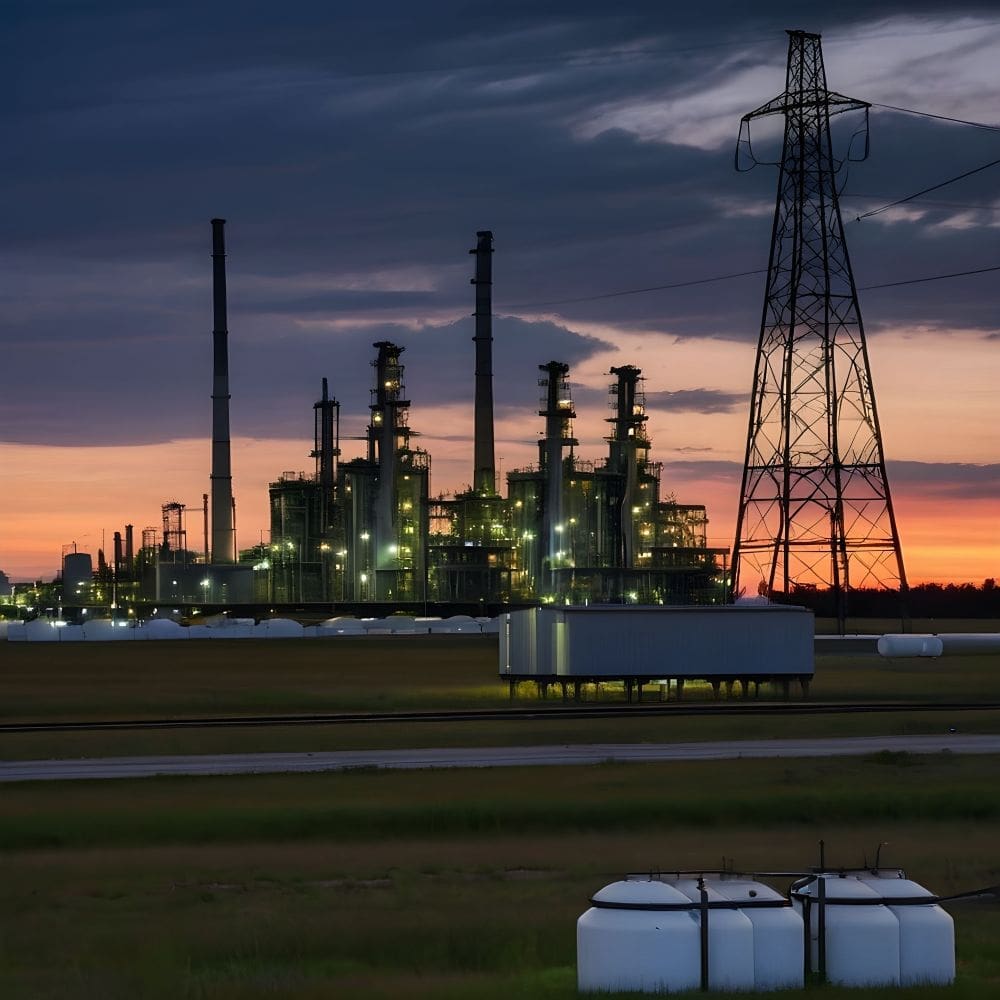Most people don’t think twice about the energy behind their daily routines. Flip a switch, and your lights are on; turn the tap, and hot water flows; your phone charges while the coffee brews. But behind each of those actions is a vast network of energy infrastructure, much of it powered by hydrocarbons — oil and natural gas — that we rarely see but rely on every day.
The energy we don’t see
Natural gas is the workhorse of American electricity. It powers much of the grid, including in states that pride themselves on renewable investment. Whether it’s lighting your living room or powering the data centers that run your internet, natural gas is often doing the heavy lifting behind the scenes.
And then there’s mobility. Most cars, trucks, planes, and trains that move people and goods across the country still run on gasoline, diesel, or jet fuel. There’s been progress in alternative energy, sure, but the overwhelming majority of what keeps the world moving today still runs on oil.
Even in the home, energy from hydrocarbons shows up in ways most people don’t think about. Water heaters, ovens, dryers — many of them are powered by natural gas or propane. They provide energy security that you can count on, especially when the sun isn’t shining or the wind isn’t blowing.
More than fuel: Materials built from oil and gas
Most folks understandably associate oil and gas with fueling cars or heating homes, but the reality is that hydrocarbons are behind far more than just energy. They’re the backbone of the materials that shape our everyday lives. From the plastic in your glasses to the synthetic rubber in your shoes, and the packaging your groceries come in, these are all made using petrochemicals derived from oil and gas.
Even the digital devices we depend on — your smartphone case, the circuit boards, the protective screen coatings — are made with resins, polymers, and solvents that wouldn’t exist without hydrocarbons. These aren’t fringe uses. They’re foundational.
When we refine oil or process natural gas, we break down hydrocarbons into simpler molecules like ethylene, propylene, and butadiene. These compounds are then used as feedstocks to make a wide range of materials through processes like polymerization and alkylation. In plain terms, we’re taking nature’s raw building blocks and transforming them into durable, useful products that touch nearly every part of modern life.
So even if you never touch a gas pump, oil and gas are still in your life — on your shelves, in your clothes, under your roof. They’re just working behind the scenes.
Feeding the world takes energy, too
Energy’s role in agriculture is often underestimated. Hydrocarbons are essential to our food system. Synthetic fertilizers, made from natural gas, have increased crop yields around the world. Without them, global food production would fall dramatically.
Then there’s the equipment. Tractors, combines, irrigation systems — most of them run on diesel. Transport trucks move food from the farm to the processing center and finally to your local grocery store. Every step of that journey is powered by oil and gas.
Oil and gas power economic opportunity
When we talk about public infrastructure — roads, hospitals, schools — we’re also talking about hydrocarbons. The steel beams, roofing membranes, and construction materials often come from oil-derived products.
Beyond the materials, the oil and gas industry supports millions of jobs in the U.S. These aren’t abstract jobs; they’re welders, truck drivers, engineers, lease operators, and accountants. Across producing regions like the Williston Basin, oil and gas activity continues to support local economies and skilled jobs from field operations to finance.
We also can’t overlook the bigger picture. A stable energy supply supports a stable economy. The U.S. economy and many of our allies rely on dependable energy sources. Domestic oil and gas help ensure we’re not overly reliant on foreign regimes whose interests may not align with our own.
Balancing today’s needs with tomorrow’s goals
There’s no question the energy landscape is changing. Renewables like wind and solar have a growing role to play, but they come with limitations — chief among them is intermittency. When the wind doesn’t blow or the sun isn’t out, natural gas often steps in as the backup.
Across the industry, technology plays a growing role in improving both performance and environmental responsibility. That kind of stewardship isn’t just a talking point; it’s becoming a core measure of how forward-looking companies operate. That means cleaner-burning engines, more efficient drilling techniques, and innovations like carbon capture.
Supporting innovation in oil and gas doesn’t mean opposing progress. These ideas can — and should — coexist.
The key is honesty and balance. Transitioning energy systems is a long-term process, and it has to be done in a way that protects jobs, affordability, and reliability. That’s something that all of us, regardless of politics, should be able to agree on.
Why this matters now more than ever
Whether we admit it or not, our lives are built on top of systems that run on oil and gas. From morning coffee to evening Netflix, hydrocarbons are behind the curtain, making things work. The goal isn’t to resist progress, but to recognize the real energy needs of real people.
If we want to build a better energy future, we’ve got to start from a place of truth. That begins with acknowledging what oil and gas provide today, and how we can make them cleaner and more efficient.
For those of us in the energy sector, the focus isn’t on headlines; it’s on building durable solutions that can evolve with real-world demands. The hope is that more people will begin to take a second look at what truly powers their lives, and what it will take to fuel the future responsibly.
Adam Ferrari leverages nearly 20 years of experience in the oil and gas industry as a leader atPhoenix Energy, focusing on key initiatives for the company’s growth. Raised in an Illinois farm town, he earned his chemical engineering degree magna cum laude from the University of Illinois at Urbana-Champaign. Starting at bp in the Gulf of Mexico, Ferrari honed his engineering skills, then moved through various leadership roles and a stint in investment banking at Macquarie Capital. His entrepreneurial drive led to the founding of multiple oil and gas ventures. Phoenix is the culmination of all his work experiences and is his most important project yet.






